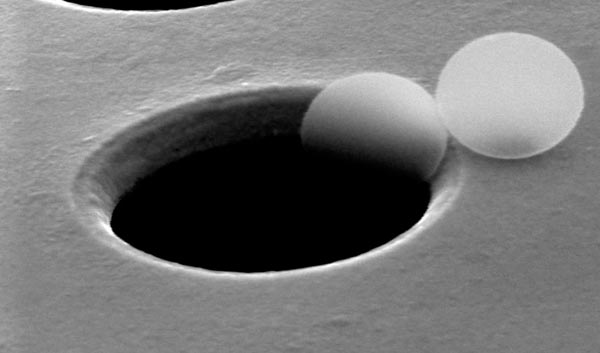
The recent winners of this year’s Nobel Prize for Chemistry join a famous lineage of scientists who have shed light on the biomolecular world by using X-ray crystallography. However, new research published this week unveils an alternative to this famous technique that could reveal the structure and properties of biomolecules in much finer detail. According to its creators in Switzerland, the new method has the potential to revitalize biophysics, biochemistry and molecular biology.
Award-winning research
Developed by physicists, X-ray crystallography determines the structure of crystalline materials by scattering a beam of X-rays from the electrons within a material and measuring the diffraction pattern that results. James Watson and Francis Crick at the University of Cambridge, with the help of Maurice Wilkins and Rosalind Franklin at King’s College London, famously used this technique to determine the double-helix structure of DNA molecules. Similarly, this year’s Nobel Prize for Chemistry was awarded to the trio of biophysicists who used X-ray crystallography to determine the atomic structure of ribosome – the sites in cells where proteins are produced.
Despite all its successes, however, the ultimate limitation of this technique is that it works by averaging over millions of molecules in a crystal. This inevitably means that some of the finer details of the molecular world could remain undiscovered. Moreover, there are many protein molecules that are very difficult or impossible to crystallize.
The obvious technological solution for researchers is to replace their X-ray crystallography with high-energy electron microscopes, which physicists are already using to peer into the inanimate, atomic world. The trouble is that biological matter can be very delicate and so the radiation used in these techniques can damage or destroy the biomolecules under observation.
Electrons slow down
Now, Hans Werner-Fink and his team at the University of Zurich have suggested a way around this problem by creating a form of microscopy that utilizes lower-energy electrons. To demonstrate their new technique, the researchers isolated a strand of DNA and exposed it to a beam of low-energy electrons over the course of 70 min. By tracking the electrons that are scattered elastically, the researchers were able to build up holographic images of the DNA.
Underlying the new technique is the fact that, at certain energies, the electron radiation causes no damage to the DNA. In this way, Fink and his colleagues report successful imaging at a number of discrete energy points up to 230 eV. They admit that they do not fully understand why these “energy windows” exist but they conclude that elastic scattering must dominate at these frequencies.
Fink told physicsworld.com that, although the holography technique is simple in principle, there have been a number of technical challenges to overcome in realizing the technology. The researchers are now working with industrial partners in Germany to improve the design of their electron detector as well as their miniaturized electron lens. “We are convinced that our technique has the potential to offer the most detailed images yet of single biomolecules,” Fink said.
The related research paper is currently under review for publication in Physical Review Letters and an advance copy is available on the arXiv preprint server.



